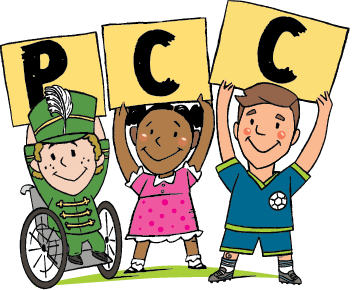Jacksonville Pediatric Blog
Home » Blog

Mental Health in Children: Identifying Warning Signs and Seeking Support
When most people think of childhood, they think of being carefree with no responsibilities. Yet, children are not exempt from mental health challenges, and nurturing their mental health remains an important part of their well-being from a young age. As their parent or caregiver, you must understand the warning signs of mental illness and recognize how to support them should this part of their health decline. The Difference Between Mental Health and Mental Illness You may be thinking, “My child doesn’t have mental health! They’re fine! They’re only 5 (or 7 or 10)!” This is a common misunderstanding of terminology. People believe that “mental health” and “mental illness” are synonyms. Mental health — like physical health — is something that every individual has. It is something that can be nurtured and maintained. Some people may have positive mental health while others may have negative. On the other hand, mental illness impacts a person’s ability to function in the long term. It is normal to feel a range of emotions, including sadness, anger, frustration, unhappiness, or stress because of difficult situations in your life. However, if these emotions endure over a long period, then they can cause mental illness, which impacts how we see ourselves and the world around us. Developing a Mental Illness Anyone can develop a mental illness due to long-term emotions or other environmental factors. However, some people are more prone to this occurrence. Here are some risk factors that may increase your child’s risk: Family history of mental illness Unresolved trauma Abusive childhood experiences Stressful live events Examples: Death of a loved one, financial problems, or divorce • Environmental influences on a fetus Examples: Exposure to drugs or alcohol • Social factors Examples: Discrimination, poverty, or barriers to opportunity Warning Signs of Mental Illness in Children Parents and caregivers often miss signs of mental illness in children because they are different than they are in adults. Children don’t always have a sense of what’s wrong, and they may not be able to verbalize what they are feeling. Therefore, you may need to watch for behaviors and patterns and piece together the following key indicators. 1. Mood Changes Prolonged periods of sadness, excessive crying, irritability, or noticeable mood swings 2. Difficulty Concentrating Signs of trouble focusing or sitting still 3. Changes at School Reports of declining academic performance, trouble concentrating, reluctance to attend school, differences in behaviors toward teachers and peers 4. Intense Feelings Overwhelming fears, worries, or anxieties for no reason or those that interfere with daily activities 5. Frequent Nightmares Nightmares that happen more than once a week, affect your mood, or impact your daily activity 6. Increased Aggression Increased disobedience, dangerous or out-of-control behavior, and frequent fighting 7. Frequent Temper Tantrums Tantrums that are longer or more severe and occur multiple times per day in children older than 5 regularly 8. Physical Harm The act of deliberating hurting one’s own body (cutting or burning) 9. Unexplained Weight Loss A sudden loss of appetite, frequent vomiting, or use of laxatives (signs of a potential eating disorder) 10. Substance Abuse Using drugs or alcohol to cope with unhealthy feelings What Are the Most Common Childhood Mental Disorders? You’ve ended up on Google, and you’re seeing your child’s symptoms populate for mental illnesses you’ve never heard of. Don’t stress. No one can diagnose your child besides a qualified medical professional, and there are only a handful of mental health disorders that are even common in children. Here’s what is most likely if your child is showing symptoms. Anxiety Does your child seem nervous or worried about daily activities? Is it starting to interfere with their life? If so, they may have an anxiety disorder, panic disorder, or social anxiety. Treating anxiety and learning coping mechanisms can help to address symptoms they’re experiencing. Depression Depression is characterized by persistent sadness or loss of interest in activities they once enjoyed. If your child hasn’t been functioning normally and you suspect depression, talk to their pediatrician and get a referral for a mental health professional. ADHD ADHD is now a common diagnosis for young children. It’s marked by a pattern of inattention or hyperactivity-impulsivity that interferes with their development. Keep in mind that ADHD symptoms are often different in boys than they are in girls. Behavioral Disorders If your children display a pattern of disruptive and violent behaviors that is not typical of their age, then they may have a behavioral disorder. The most common of these include conduct disorder and oppositional defiant disorder. ASD ASD stands for Autism Spectrum Disorder. Autism, a developmental disorder, has become more well-known over the past two decades. This disorder impacts communication and behavior. Seeking Support for Childhood Mental Illness How can you best support a child with mental illness? Here are 8 steps you can take immediately to increase your child’s chances of success. 1. Talk to your child Your very first step should be talking with your child. Have an open, honest, and non-judgmental conversation with them about the struggles they’re having. Let them know that you’re there to support them and listen without interruption, so they can tell you how they feel and what they want to do. 2. Consult with medical professionals Schedule an appointment with your child’s pediatrician, so they can evaluate their well-being. Depending on the circumstances, your pediatrician may recommend you to a mental health doctor like a child psychologist psychiatrist, or licensed counselor. 3. Collaborate with your child’s school Schools have existing support system to help with mental health issues, so tapping into these resources can be incredibly valuable (especially if you aren’t sure where to start). Your child’s teachers and school counselors can offer observations and insights into your child’s world at school and get you moving in the right direction. 4. Consider therapy If your child is struggling with their mental health, therapy can be a great option. Whether they end up in cognitive-behavioral therapy, play therapy, family therapy, or another type, a qualified

The Role of Play in Child Development
“Will you play with me?” It’s probably a sentence you hear from your child’s mouth daily, and there’s a good reason for it. The American Academy of Pediatrics says that play shapes the physical, cognitive, emotional, and social growth of children, and it’s essential for their well-being. It’s one of the most important ways that they can learn life skills and explore their surroundings. Here’s what you should know about the role of play in your child’s development and how you can enhance this medium in their life. What Are the Types of Play? 1. Physical Physical play engages your child’s body. It requires them to move and develop both fine and gross motor skills. Gross motor skills involve the muscles required for large movements like crawling, walking, jumping, and running. Fine motor skills are movements we make with fingers and toes such as reaching, touching, grasping, releasing, pushing, pulling, shaking, tapping, twisting, and squeezing. Your child needs fine motor skills to zip a zipper and tie their shoes. You can encourage physical play by: Visiting a playground Going to the park Using community spaces like baseball fields or basketball courts Teach them physical games like tag or hopscotch 2. Cognitive Cognitive play are activities that engross your child’s mind and thereby enhance their memory, attention, and decision-making abilities. This is often a quieter form of play that helps to formulate their problem-solving and creative thinking skills. You can engage your child in cognitive play with: Counting games Puzzles Memory games Reading Building blocks 3. Social Social play is the form of play your child is seeking when they ask you to play with them. It involves interactions with another person (either a peer or an adult). Through social play, children develop the ability to communicate and work as a team. Social play is essential as it helps children learn how to navigate social norms and relationships, which is a life skill. You can foster social play through: Play pretend Play dates Charades 4. Emotional This final type of play helps children learn how to express and understand their emotions. By supporting emotional play, you help your child build empathy, self-awareness, and emotional regulation skills. You can nurture emotional play by encouraging: Imaginative play Art Storytelling Play Through the Ages Follow this guide to understand how you can initiate age-appropriate play regardless of your child’s age: Birth to 6 months Imitate your baby’s coos and babbles to have a conversation Show your baby bright and colorful objects Place your baby in different positions (such as on their stomach for tummy time) 7 to 12 months old Use a mirror Play peek-a-boo Expose your baby to different sensory experiences (ex: grass, bubbles, water) 1 to 3 years old Give your child empty containers, blocks, shape sorters, puzzles, etc. to play with Read to your child regularly Sing songs and play rhythms 4 to 6 years old Tell your child stories Schedule play dates Provide opportunities for singing, dancing, running, etc. Read to your child Provide dress-up clothes and props What Are the Advantages of Play in Childhood Development? Is play more important than teaching your child the ABCs? Wouldn’t they be better served going into kindergarten knowing all their shapes and colors rather than having unstructured playtime for most of their days? Believe it or not, a play-focused approach to learning is equally effective as traditional teacher-led methods when it comes to literacy, thinking skills, and numeracy. Allowing your child to explore at their own pace and learn through play won’t set them back in life — it can only enhance it. Here are some specific benefits of play in childhood development. Maintaining physical health Children who engage in physical play improve their cardiovascular health, build strong muscles, and maintain a healthy weight. When you engage in regular physical play, you reduce the risk of obesity or other health-related problems. Boosting cognitive development Through play, children explore their world and learn new concepts. They practice decision-making and learn the consequences of their actions. Depending on the activity, they may be required to exercise their memory, patience, attention span, or another challenging skill for their age. Enhancing social skills Children collaborate and relate through play. They learn how to communicate with one another and resolve conflicts at an early age. Those who do not engage in social play have a more difficult time fostering empathy and understanding the emotions of others. Fostering emotional well-being Children also learn a lot about their emotional state through play. It provides them a way to process their feelings, cope with disappointment and challenges, and thereby build resilience. Unstructured vs. Structured Play You may be drawn to structured play for your child — organized sports or art lessons — where they’ll be directed or guided. There are benefits to these programs. They have curriculums and learning outcomes. However, it’s equally important to allow your child unstructured playtime. During unstructured play, also called independent play, your child can explore their interests, use their imagination, and make their own choices. Overdirecting children can reduce their confidence and self-esteem. Ultimately, you want them to feel independent and capable of problem-solving as they grow. The Role of Parents and Caregivers in Play Your role as a parent or caregiver should be to support and encourage play in your child’s life. Here are a couple of ways you can do so: Provide a safe environment (both inside and outside), so children have access to spaces intended for play. Remember, play spaces will get messy and that’s okay! Your child needs space and freedom for creativity. Offer a variety of toys, games, and activities that cater to different types of play. For example, provide a collection of clothes and masks for your child to use. Dress-up is a classic form of play, and you don’t need elaborate costumes for this to be effective. You could even make masks with your child as an activity before using them during imaginative play. Encourage imaginative

8 Ways to Stop the Thumb Sucking Habit
Are you starting to see an open bite or overbite form in your child’s mouth? Are they struggling to pronounce consonant sounds like “D” and “T”? What about cracked or bleeding skin around the mouth or hands? Believe it or not, all these issues can have the same root cause: thumb sucking. Maybe you’ve gotten feedback from your dentist or pediatrician. Perhaps your family or friends have made some off-handed comments that were both unhelpful and uncomfortable. Or maybe you’ve just started to notice it yourself, and you think, “It’s time to stop this before they go to college with their thumb in their mouth!” Whatever the case, thumb sucking can be a tough practice to break. Unlike a pacifier, you can’t cut the tip, throw it out, or trade it for another toy. Your child’s thumb is attached to their hand, so they must be involved in the process a bit more from the get-go. Why Kids Suck Their Thumbs The American Academy of Pediatrics says sucking is a survival instinct for babies. They are born with this intense need to suck, so they can find the breast or bottle shortly after birth. You may also notice that your child puts their fingers in their mouth to suck pretty much immediately after they realize they have hands. About 90 percent of newborns will show some form of hand sucking just two hours after birth! Sucking on fingers is one of the many ways they learn to self-soothe. This isn’t negative until it begins to affect other areas of development whether physical, emotional, or social. Consider Your Child’s Age Before we get into the top tips to stop thumb sucking, let’s consider the ages where the habit is more or less problematic. After all, should you really worry about your teeny tiny babe putting their thumb in their mouth? When does thumb sucking actually affect your child’s health? When it comes to your infant (less than 12 months), thumb sucking is a soothing tactic. Your child may take some time (probably around 6 months) before they find their thumb and fixate on it. If your child continues thumb sucking into their toddler years, that’s when you need to keep an eye on the practice and how it begins to impact their development. If you have a 4-year-old still sucking their thumb, this is your sign to implement the techniques listed below. At that point, they should have all those baby teeth and are starting to head into the school years. Top Tips to Stop Thumb Sucking Start talking to your child Since their thumb is so accessible, thumb sucking isn’t the easiest habit to phase out without your child’s participation. Begin a conversation with your child about their thumb sucking. Ask them (nicely) about the habit. Why do they do it? How does it make them feel? Do they do it without noticing, or are there specific times they like to do it? Is there another soothing technique that they like just as much? Their answers to these questions can help you get ideas of how you can best address their specific habit and allow them to self-soothe or cope with other objects. During this conversation, you can also explain to them some of the developmental issues that come with thumb sucking. Show them in the mirror what’s happening to their teeth. Remind them of the uncomfortable cracked skin that they’ve had around their mouth. While 4-year-olds aren’t able to reason like adults, you can bring them into the dialogue instead of trying to work around them. 2. Learn about thumb sucking Read books about thumb sucking or watch a TV show where a character has to break a habit. This can help your child relate their situation to a character and allow them to see that they aren’t alone. Breaking a habit isn’t easy, but it is possible! Here are some books you may consider reading together: Anna and Dedo: A Thumb Ventures Out Thumbs Up, Brown Bear Thumbs Up for Ted’s Thumbsie Dana’s Finger is Set Free Isadora! Take That Thumb Out of Your Mouth 3. Apply special nail polish If your child is having a hard time remembering not to suck their thumb, you might try purchasing a special nail polish with a bitter taste. Examples include the ella+mila Nail Care No More Biting, Thum Thumb Sucking & Nail Biting Liquid, and Mavala Stop Deterrent Nail Polish Treatment. These nail polishes are intended for nail biters and thumb suckers because it helps remind the brain every time the fingers are brought to the mouth. One taste of the polish and your child will be left with a bitter taste on their tongue, further reinforcing the goal to stop thumb sucking. 4. Understand thumb-sucking patterns Some children use thumb sucking to self-soothe before bedtime while others may use it as a coping mechanism when they’re anxious, sad, or angry. If your child isn’t able to tell you why they do it (and you don’t know already), spend a couple of days studying your child. Understanding how they are using the habit can allow you to offer other ways for them to soothe or cope without it. 5. Offer rewards and incentives Consider creating a reward or incentive program for your child. Who isn’t motivated by a prize they really want? For instance, you could start small by creating a sticker chart for 30 days without thumb sucking, and when your child reaches that milestone, they get to go pick out a toy. If you think 30 days is too big a goal to start, dial it back to a week. Some families prefer to stick with non-monetary prizes (just stickers, for instance) while others know their children are motivated by certain toys or treats. Do whatever works for your family! 6. Buy a finger guard or hand stopper If your child needs a more physical reminder to stop thumb sucking, you can consider a finger guard or

Preparing Your Child for a New Sibling: Tips for a Smooth Transition
Hooray! You’re officially adding to your family. Amid this exciting news, do you have a nagging voice in the back of your head? Is it whispering questions like, “How will my older child do? Will they take the news well? What about when the baby arrives? Will they be jealous or excited?” Nearly all parents experience this uncertainty, and it helps to consider how you can facilitate a smooth transition at home. Here are our top tips. 1. Tell your kid(s) early Let your older child know the happy news as early as you feel comfortable. Some parents prefer to wait until they’re out of the first trimester or until they don’t mind others knowing if they think their child will spill the beans. Others want to prepare their child over many months or let them know why Mom might not be feeling her best. The choice is yours. Although, whatever your situation, we recommend giving your children as much time as possible to ask their questions. A baby is a change to your existing dynamic, and kids are tiny humans who need time to process. When you tell them, make sure you use developmentally and age-appropriate language. Be positive and emphasize that this is a good change for your family. 2. Let them warm up on their own time Two main errors that parents can make when preparing children for a new sibling are overselling the baby and not giving the situation time. Positivity is important when introducing this addition to your family but so is honesty. From your child’s perspective, that little bundle is going to rock their world, especially if you’re going from one to two kids. They’ve only ever experienced the world with your undivided attention, and now, you’re introducing another human. So, be honest with them about what the experience will look like. A new baby is amazing, but they cry. They have dirty diapers. They wake up in the middle night. They need to be fed and rocked and loved. Let your child know that this is what babies do. It’s expected and normal, and you’ll take care of both the baby and them. This way, when mayhem breaks out in those first few weeks, your older child will (hopefully) remember that chat and roll with it. And remember, if your child is NOT warming up to their sibling in those first weeks, months, or even years, give them time. You can help foster a healthy sibling dynamic, but you can’t force it. Do what you can to facilitate and then leave it be. 3. Continue 1:1 time after the baby arrives Before your baby arrives, create a routine with your older child(ren) that you can maintain after your new bundle arrives. For this reason, it’s probably best not to form an elaborate plan that takes you out of the house for half the day. Yes, museum, library, and park dates are special, but those may be especially hard to keep when you’re postpartum with a newborn. Instead, think about short activities you can do from the comfort of your home. For instance, always read a book with your child at a certain time of day. Or introduce a new activity they may love (like playing outside with a water toy or doing Play-Doh) where you can activity engage for 30 minutes. 4. Be prepared for regression When a new baby enters a family, older kids can regress. Regression is acting in a younger or needier way. Common regressions you may notice are having accidents, wanting to take a bottle or use a pacifier, or having more tantrums than usual. Children regress when new siblings enter their family because it’s a way for them to get the attention they crave. It demonstrates to their parents that they still need them. Without this knowledge, you may find it frustrating that your child is acting out more in the middle of a difficult transition for your family. Yet, knowing that this is developmentally normal can help you treat them with compassion and love, which is what they need from you to feel secure. 5. Understand age-appropriate reactions The way children interact with others varies based on their age and development. Your one-year-old may display very little interest in a new baby while a five-year-old may be able to engage more in the concept of a new sibling. Here’s what you should expect when preparing children of different ages. • Ages 1 to 2 o Unlikely to understand what having a new brother/sister means o Talk about the baby with excitement/positivity o Look at books about babies and familiarize your older child with the words sister, brother, and new baby • Ages 2 to 4 o Be honest about babies — ex: “Babies are cute but cry a lot!” o Involve your preschooler in the planning and preparation o Buy a doll so they can practice taking care of the baby o Time up major changes like potty training, getting rid of a pacifier, moving to a bed, etc., so there are no regressions when the baby arrives o Love on your child extra because they are very attached to you and more likely to feel threatened by the baby’s arrival • Ages 4 to 6 o Tell your child what’s happening in language they can understand — ex: “Babies are fun, but they also need Mom or Dad’s help…” o Relate the situation to a book or show that your child loves to help them make connections o Check with local hospitals to see if any sibling or family classes are offered o Involve them in the preparation for the new baby • Ages 6 and Up o Explain what a new baby means and how it will affect the child o Be prepared for curiosity regarding how babies are made o Have discussions of how to hold and care for a baby o Involve your child in preparations for the new baby 6. Pre-plan

Expressing Love to Our Children
If someone asked you, “Do you love your children?” Nearly all parents would answer with an unequivocal, “Yes, absolutely! More than anything.” Yet, feeling love and expressing love are not the same act. While you may know you love your child…ask yourself, do THEY know? It’s easy for affection to get lost during busy or stressful times. Here are seven ways you can express love to your child and help improve their development and mental health as well as your relationship. 1. Practice Active Listening Active listening is a key communication skill that all parents should utilize with their children. This skill is when you not only listen what someone is saying but you hear their thoughts and feelings. Here are some ways you should practice active listening: Give your child 100% of your attention Make eye contact Get down on their level Repeat what your child is saying back to them Clarify if any details are hard to understand Parents often make the mistake of trying to listen to their children while doing other activities such as washing dishes, driving the car, cleaning the house, folding laundry, or any number of other chores. However, one of the top ways to make your child feel loved is by taking the time to listen to them. When you don’t give them your full attention or brush off the problems they’re trying to communicate, you show them that you don’t care (even if you do!). If you make a habit of listening to them now — when they’re little — they’ll continue to feel as though they can talk to you as they grow older. You want your child to share their hopes, dreams, and problems with you as a parent, so be a good listener when they try to talk to you! Just as you would want someone to be an active listener for you. 2. Spend Quality Time Quality time is one of the best ways to connect with your child and make them feel loved. Spending uninterrupted one-on-one time together helps you get to know your child and allows them to feel close to you. Many parents struggle to make quality time a priority whether they have a busy work schedule, multiple children, or a myriad of home obligations. We know it’s not always easy to get hours a day with each child! That said, it is important to make quality time a priority. Even if it’s just 20 minutes per child, block out different segments of your week. You can structure this quality time around an activity that your child loves like going for a walk, playing at the park, or drawing pictures. During this time, put your phone away, engage with them, and make sure they know that they have your full attention! Practice those active listening skills and demonstrate interest in their life by asking them about their day, friends, and interests. 3. Give Encouragement Encouragement is a significant way that parents provide emotional support to their children. Children who receive encouragement from their parents demonstrate better behavior and have a stronger sense of self-motivation and self-esteem. Of course, this can be easier said than done. How do you know when to encourage your child versus when to leave them be? Should you constantly praise them? Below are some guidelines that can make it a bit easier. Encourage the behavior you want to see your child repeat Describe the good behavior that you see your child doing, so they know you’re happy about it and what it is they should continue doing Recognize the effort your child makes and give them honest and sincere encouragement Focus on giving age-appropriate encouragement Encourage your child as they learn and grow throughout the process — they don’t have to do it perfectly before you praise them! Strive to give your child five different encouragements a day and see the difference it makes 4. Set Boundaries Do you constantly question yourself when it comes to setting boundaries with your kids? Do you feel mean whenever you lay down rules or consequences? Wouldn’t it be better if you could just be friends with your kids? Boundary setting can be uncomfortable, but research shows it’s a crucial aspect of parenting. All children need reliably enforced rules in their lives, and when you disregard boundaries that you’ve set previously, it’s confusing for your children. Understanding how to navigate and respect boundaries is a lifelong skill. By raising your child in a home with clear, healthy limits, you enable them to see how boundaries are helpful and can function in their own life moving forward. Need help learning to set boundaries? It may not be your fault! If you were raised in a home with unclear boundaries, you could be learning along with your child. Here’s what we suggest. Have clear, fair, and consistent rules Be firm and consistent Always keep your word once you’ve set a boundary Speak in a firm voice, maintain appropriate eye contact, and have a neutral facial expression Follow through with consequences for inappropriate behavior Propose alternatives Don’t be afraid to give your child a few choices so they feel some independence and autonomy Have developmentally appropriate expectations Don’t think that a 3-year-old will behave the same way as a 12-year-old with respect to your boundary! 5. Model Healthy Behavior As a parent, you are your child’s number one example. One way you can express love for your child is by modeling healthy behavior and coping mechanisms, even when life is hard for you to handle. Parents often believe that kids don’t feel stress and anxiety. It’s an old-school thought that kids don’t have anything to be stressed about. Wrong! Even if they don’t show it, kids feel stress and anxiety from school, sports, friends, and family members. In fact, think about the last time you were stressed. How did your stress affect your children? Many parents don’t notice the disruption their stress can have on their family

How to Boost Kids’ Immune Systems During Winter
Last week, there was a nasty cold going around your child’s elementary school. This week, the flu is circulating your baby’s daycare. You’ve already missed work once this week, and you don’t want to jeopardize your PTO for the upcoming holidays. So, what do you do? You can’t control cold and flu season, but you can boost your kids’ immune systems. Here are 8 ways to increase the likelihood that your kids stay healthy over the next few months. 1. Maintain a healthy diet Tis the season to eat all the festive food (read: junk)! It may seem like your child is coming home with Christmas cookies and holiday treats every single day. What should you do? Tell them absolutely no cookies? Let them eat to their heart’s desire because they’re only little once? As always, the answer is somewhere in the middle. Your kids’ diet should be well-balanced with fruits, vegetables, whole grains, and lean proteins. These foods are packed with nutrients and essential vitamins that will keep their immune system strong. It’s worth noting that high sugar intake can suppress the immune system and make the body more susceptible to illnesses. However, simultaneously, there’s no guarantee that eating a perfect diet will protect your child from the flu going around school. Do your best to serve balanced meals and mix in a few treats here and there. Everything in moderation. 2. Prioritize sleep Quality sleep is critical for immune function as well as overall health. Here is a quick chart detailing how much sleep kids should get by age: Infant (4 to 12 months): 12 to 16 hours, including naps Toddlers (1 to 2 years): 11 to 14 hours, including naps Preschool (3 to 5 years): 10 to 13 hours, including naps School-age (6 to 13 years): 9 to 12 hours If you’re looking at the chart above and thinking, “My kid has never slept that much in their life,” talk to your doctor. Sleep is a tricky subject for parents, and recommendations don’t always match reality. That said, the evidence is clear that sleep impacts overall health, so if you want to keep your kid healthy, it’s important to prioritize a good sleep routine. We recommend establishing a consistent bedtime routine. A sample routine could include having a nutritious snack (such as a banana), bathing your child, going to the bathroom or putting on a fresh diaper, brushing teeth, reading a book, singing a song together, and cuddling and talking about their day. 3. Stay active Encourage your little ones to stay active. Regular exercise helps keep the body healthy by improving brain health, managing weight, reducing the risk of disease, strengthening the muscles, and getting the immune cells moving. After your child exercises, they’ll have a lasting presence of immune cells for up to three hours after exercise is complete. However, that doesn’t mean you have to take them to a formal sports practice or out for a run. Exercise can be as simple as dancing around the living room, playing in the backyard, or sledding outside. If you’ve gotten to the end of the night without getting outside, consider taking a family walk after dinner. Your littles can walk, run, or ride their bikes around the neighborhood to get their energy out. 4. Teach proper hygiene practices When it comes to boosting your child’s immune system, you also must consider how to avoid unnecessary germs as well. That’s where hygiene practices come in. You can introduce these practices early — consider even 9 to 12 months — so your child is well-acquainted with them by the time they need to be doing them independently. What practices should you focus on teaching? Regular handwashing Handwashing is a lifelong healthy habit. Here are the five steps you should teach: wet, lather, scrub, rinse, and dry. Your child should know to wash their hands at key times such as after using the bathroom, before eating, or after blowing their nose. The step by step of handwashing includes: Wet your hands with clean, running water (warm or cold) Turn off the tap and apply soap, allowing it to lather by rubbing your hands together Scrub your hands for at least 20 seconds, including underneath your nails, in between your fingers, etc. Rinse your hands well under clean, running water Dry your hands using a clean towel or air dryer While hand sanitizer can quickly get rid of germs if soap and water are not readily available, it is not a perfect alternative. You should always use soap and water if available. Covering their nose and mouth When your child coughs or sneezes, teach them to do so into their elbow. This is proper respiratory etiquette, and it helps prevent the spread of disease. If you cough or sneeze into your hands, you risk spreading germs to whoever or whatever you touch thereafter. You wouldn’t want someone sneezing or coughing all over you — so don’t do it all over someone else! Practice this with your child a few times before they sneeze or cough. You can even employ a few of their favorite stuffed animals. Lift the stuffed toy’s arm to their mouth and show your child how to properly cover it. It may take them a few times to get it, but afterward, they’ll be better equipped to ward off germs. 5. Manage stress Did you know that chronic stress can weaken the immune system? Many adults mistakenly believe that kids can’t experience stress — this isn’t true! It’s important to recognize that children have anxieties, and it is your job as their parent to help them learn to cope and manage through them. One method you can use is doing activities they enjoy like spending time outdoors, reading, or drawing. If you believe your child has persistent anxiety, don’t be afraid to mention it to your doctor. 6. Update their vaccinations Consult your pediatrician about the vaccinations your child needs. Both the flu and COVID-19 vaccines





